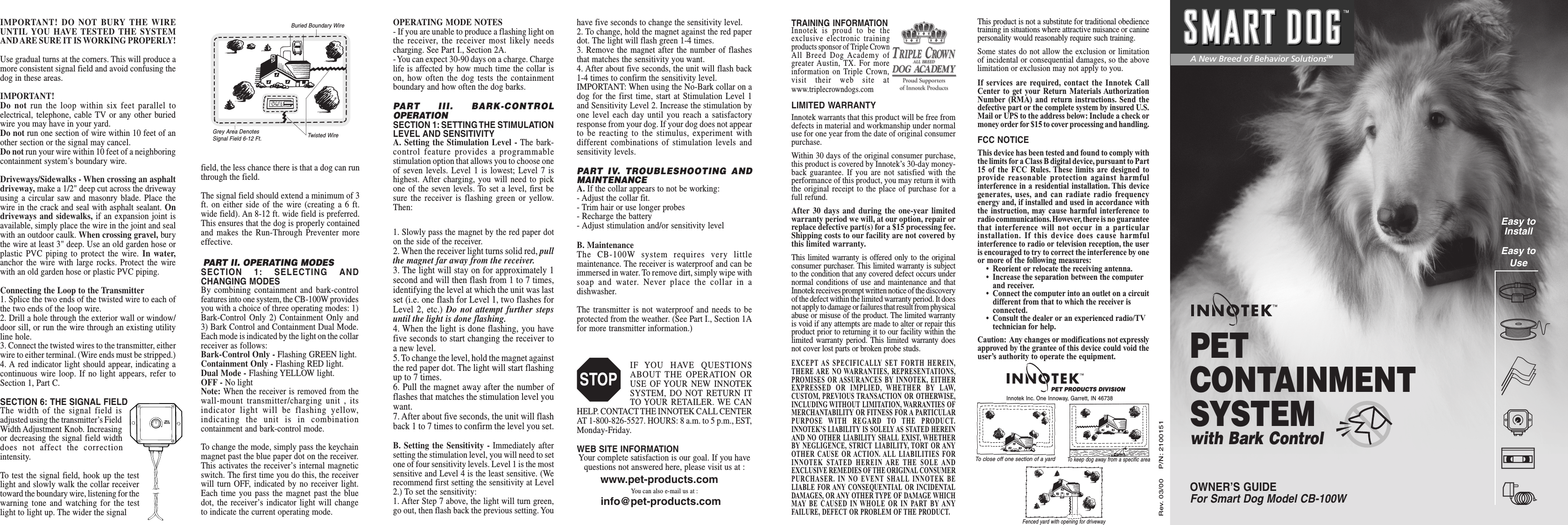Radio Systems 050229 Pet Containment System M022900 User Manual Manual CB 100W XL revise
Radio Systems Corporation Pet Containment System M022900 Manual CB 100W XL revise
Contents
- 1. Users Manual
- 2. Revised Manual Part 1
- 3. Revised Manual Part 2
Users Manual

